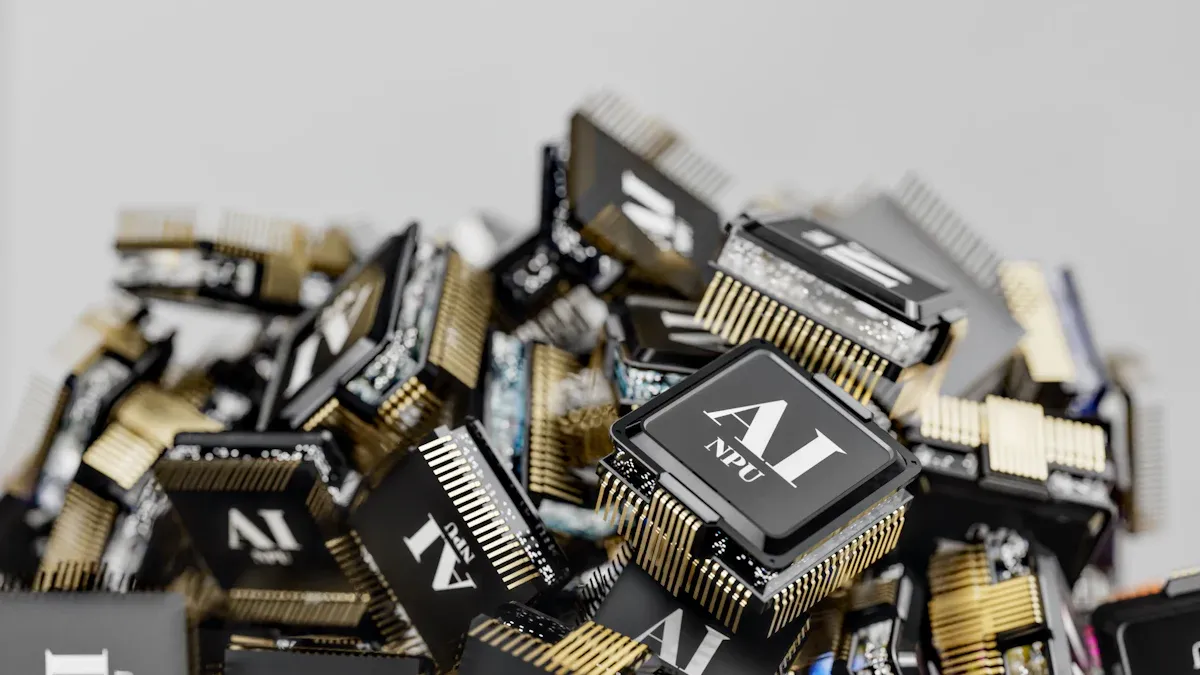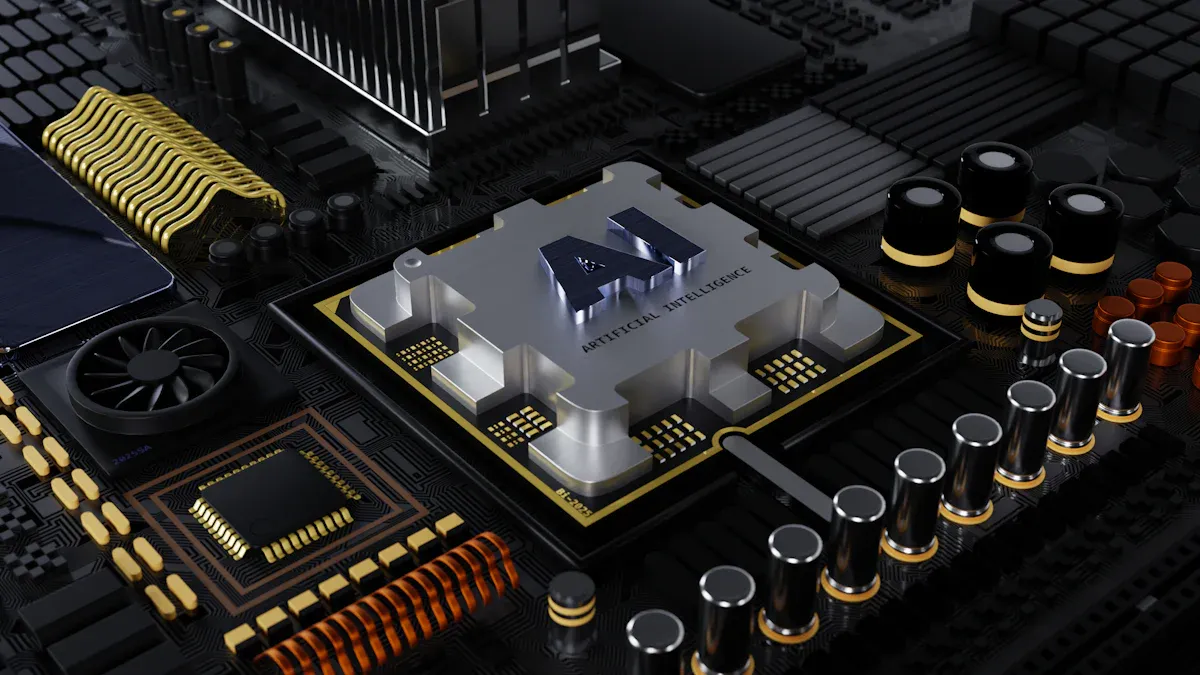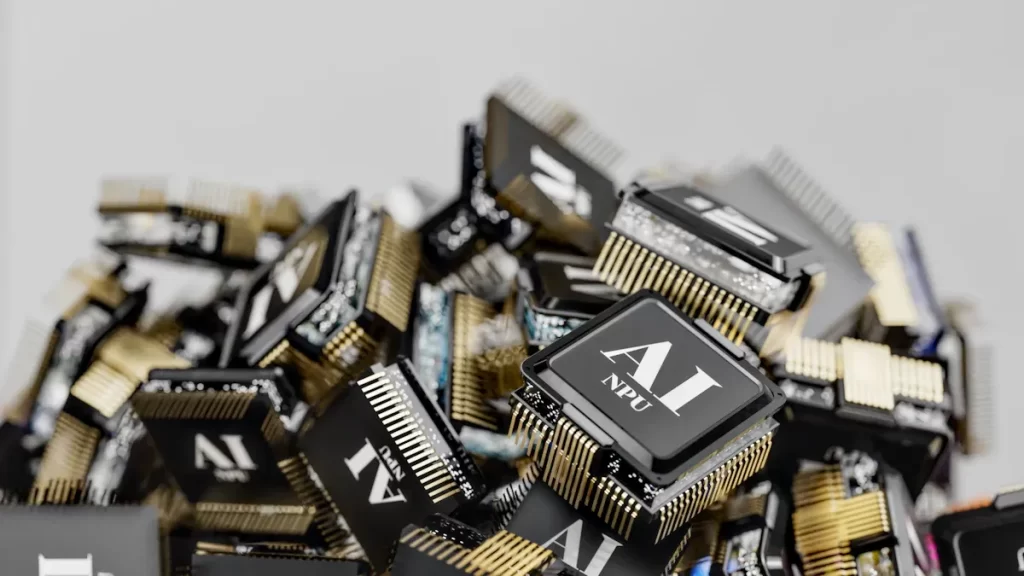
Artificial intelligence (AI) is changing how RSJPCBA design is done. It speeds up work by cutting design time by 25 to 50%. AI finds mistakes accurately, making quality checks better. It also helps improve soldering, creating strong and lasting connections.
The electronics field gains a lot from AI tools. Predictive maintenance stops sudden breakdowns, saving time. Smart systems use less energy, making them efficient. Smaller gadgets are in high demand, growing the semiconductor market. This market may reach $100 billion by 2025. These changes show how AI is shaping RSJPCBA.
Key Takeaways
AI cuts design time by 25-50%, letting teams be creative.
AI-powered predictive maintenance lowers machine breakdowns by 30-50%, saving money.
AI improves quality checks by spotting defects fast, making better products.
Using AI for tasks boosts work speed by 25%, reducing waste.
Training workers is key to using AI tools well in factories.
AI in PCBA Design

Automating Schematic Design
AI tools are changing how schematics are made. They handle hard tasks automatically. A smartphone PCB design now takes 2 days, not 2 weeks. This saves time for creative ideas instead of boring tasks. RF path checks now take 12 hours, not over 100 hours. Making a bill of materials (BOM) used to take 20 minutes. Now, it happens in just seconds.
Benefit Description | Time Saved | Source |
|---|---|---|
Smartphone PCB design | From 2 weeks to 2 days | Shift Left: The EDA Journal |
RF path checking | From 100+ hours to 12 hours | Shift Left: The EDA Journal |
RF setup time | From 60 minutes to 5 minutes | Shift Left: The EDA Journal |
BOM creation | 20+ minutes to seconds | N/A |
AI fixes design mistakes and keeps things accurate. It lowers costs by improving layouts and routes. Teams work better together because data is stored in one place.
Optimizing Component Selection
AI uses smart learning to pick the best parts. It studies big data to find materials that work well. It also checks speed and efficiency to save resources. This makes designs better and helps new ideas grow.
AI predicts accurately, making hard circuit designs easier. It helps you choose parts that work well, cost less, and waste less.
Enhancing Layout and Signal Integrity
AI makes layouts and signals better in PCB designs. It spots problems early and improves routing. This reduces signal interference and keeps designs reliable. AI tools check signal paths to avoid mistakes and meet high standards.
With AI, layouts are better, and products are more reliable. These changes show how AI is improving PCBA design today.
AI in PCBA Manufacturing

Improving Quality Assurance
AI has changed how quality checks are done in PCBA. It looks at large amounts of data to find mistakes quickly. This helps catch problems early and fix them fast. Faulty products are less likely to reach customers. For example, AI does visual checks better than humans, reducing errors.
AI also uses smart tools to predict quality issues. It studies sensor data and finds patterns people might miss. This makes products more reliable. Automated checks save time and resources while keeping high standards.
Predictive Maintenance for Equipment
AI helps stop machines from breaking down unexpectedly. It studies data from sensors to predict problems before they happen. This cuts unplanned downtime by 30-50% and makes machines last 20-40% longer. Finding issues early keeps everything running smoothly.
AI also boosts work speed by 25% and reduces breakdowns by 70%. It lowers repair costs by 25%, saving money for factories. With AI, machines work better and cost less to maintain.
Benefit | Statistical Impact |
|---|---|
Less unplanned downtime | 30-50% |
Longer machine life | 20-40% |
Cost savings | Big |
Early problem detection | Months ahead |
Streamlining Workflow and Process Optimization
AI makes work faster and smoother in PCBA factories. It handles hard tasks and checks data in real time. This cuts production time and improves efficiency by 25%. AI watches for slowdowns and suggests ways to fix them.
AI also helps manage supplies and reduces waste. It saves energy and speeds up product launches. Real-time checks lower defects, making better products. With AI, factories save money and work more efficiently.
Metric | Improvement Percentage | Description |
|---|---|---|
Productivity | 30% | AI handles tough tasks and analyzes data better. |
Operational Efficiency | 25% | Real-time checks reduce delays and save money. |
Cost Reduction | Big | Less waste and energy use lower costs. |
Quality Control | Better | Fewer defects mean higher-quality products. |
Time-to-Market | Faster | AI speeds up production for quicker launches. |
Benefits of AI in PCBA
More Automation and Better Efficiency
AI has changed how automation works in PCBA. It takes over boring tasks, making work more accurate and with fewer mistakes. AI tools check data instantly, helping decisions happen faster and speeding up production. For example, 95% of top companies say AI made their work quicker.
AI also makes workflows smoother. Smart systems predict what supplies are needed, stopping delays. This keeps production on track and on time. By handling simple jobs, AI lets teams focus on harder problems, improving overall work.
Efficiency Metric | Description |
|---|---|
Better Accuracy | AI handles tasks precisely, cutting down on mistakes. |
Faster Product Launches | Quicker designs and production mean products are ready sooner. |
Smarter Supply Management | AI predicts needs, keeping stock levels right and avoiding delays. |
Saving Money and Using Resources Wisely
AI helps save money by cutting waste and using resources smartly. It predicts machine problems before they happen, saving repair costs. For example, Samsung cut maintenance costs by 15% using AI tools. Fixing issues early keeps machines running longer and better.
AI also lowers energy use in factories. It studies data to predict changes and uses less power. In wafer-making, companies saved millions each year with AI. These savings help businesses stay strong and compete well.
Maintenance Savings: Samsung saved 15% on repairs using AI tools.
Energy Efficiency: AI cut waste and saved millions in wafer-making.
Better Product Quality and Trust
AI makes sure products are high-quality and reliable. It finds problems early during quality checks. Predictive tools spot issues before they grow, keeping products working well. About 97% of top companies say AI improved their product quality.
AI also speeds up testing, so new versions come out faster. It mimics human actions during tests, improving how products feel for users. This accuracy builds trust and makes customers happy with your brand.
AI speeds up testing, making updates faster.
Predictive tools catch problems early, improving product trust.
AI copies human actions in tests, making products user-friendly.
Challenges of AI in PCBA
Keeping Data Accurate and Available
AI needs good and varied data to work well. In PCBA, the quality of data affects how AI performs. For example, a study on finding defects showed this clearly. Using the PCBA-YOLO method, researchers got 97.3% accuracy on the PCBA-DET dataset. This shows that better data leads to better results. But, keeping data accurate is still hard.
Having different kinds of data is also very important. If data lacks variety, AI may miss rare problems in parts. This makes AI systems less reliable in PCBA work. To fix this, you should gather complete and correct data during every step.
Fixing Skill Gaps in Workers
Using AI in PCBA needs skilled workers who know both fields. But many workers don’t have the right skills to use AI tools. This slows down how quickly AI can be used in factories. For instance, workers might not understand AI insights or adjust tools for tasks.
To solve this, invest in training programs for your team. Hands-on classes and online lessons can teach them how to use AI. With proper training, your team can adapt to AI systems more easily.
Handling Ethical and Security Issues
AI brings up ethical and safety problems in PCBA. AI often works with private data like designs and factory details. If this data isn’t safe, it could be stolen or misused. Strong security steps are needed to protect data and keep trust.
Ethical issues happen when AI makes choices about quality or parts. It’s important to make AI decisions clear and fair. Set rules and check AI systems often to ensure they follow ethical practices. This will help create a safe and trusted AI system.
The Future of AI in PCBA
New Ideas in AI
AI is bringing big changes to PCBA. Flexible PCBs are now made for small and wearable devices. HDI PCBs are also popular for better performance in tiny gadgets. AI helps with hard tasks like routing and placing parts. This makes designing faster and easier. For instance, AI testing has cut testing time by 30%. This means products are ready quicker and work better.
5G technology is another exciting update. It needs special PCB materials for faster data speeds. AI tools help make layouts better and keep signals strong. These updates show how AI is shaping PCBA’s future.
Fair AI in Factories
As AI grows in factories, fairness is key. Clear and honest AI systems make fair choices. The EU’s AI rules focus on safe and ethical AI use. These rules match human values and build trust in AI tools.
Keeping data safe is also very important. AI often works with private information, so strong protections are needed. Regular checks and following ethical rules can keep AI safe. By solving these issues, factories can stay smart and responsible.
Long-Term Effects on the Industry
AI will change PCBA for years to come. It predicts problems early, cutting downtime and fixing machines faster. Automated tasks make work more accurate and efficient. Over time, this lowers costs and helps companies compete globally.
AI also helps create smarter and better devices. As AI improves, it will be used even more in PCBA. This will push the industry toward a greener and more advanced future.
AI has changed how RSJPCBA design and manufacturing are done. It handles hard tasks and makes work faster. AI helps pick parts, create designs, and improve layouts. This saves time and reduces mistakes. In factories, AI checks quality and speeds up work. This makes products better and costs lower.
Application/Benefit | Description |
|---|---|
AI studies big data to suggest the best parts for projects. | |
AI reads datasheets to save time and avoid mistakes. | |
Better Layouts | AI places parts smartly to make designs work well and last longer. |
Quality Checks | AI finds PCB problems early, making products better before they are made. |
To use AI fully, you need good data, trained workers, and fair rules. Fixing these issues will help AI make electronics smarter and greener in the future.
FAQ
What is RSJPCBA, and how does AI improve it?
RSJPCBA means designing and assembling PCBs for advanced electronics. AI helps by automating boring tasks and improving layouts. It also makes quality checks better and faster. This reduces mistakes and speeds up production.
How does AI help with component selection?
AI studies big data to find the best parts for designs. It looks at cost, performance, and compatibility. This saves time and avoids errors. It also ensures better use of resources and higher-quality products.
Can AI predict equipment failures in PCBA manufacturing?
Yes! AI uses sensor data to spot problems early. It finds patterns and warns you before machines break. This cuts downtime, saves repair costs, and makes machines last longer. Predictive maintenance keeps everything running smoothly.
Is AI suitable for small-scale PCBA projects?
Definitely! AI tools work well for projects of any size. For small-scale PCBA, AI makes designs easier and workflows faster. It also ensures good quality, saving time and resources even for smaller jobs.
What are the key challenges of using AI in PCBA?
The biggest challenges are keeping data accurate, training workers, and solving ethical issues. You need good data, skilled teams, and clear rules to fix these problems. Careful planning helps make AI work well.
💡 Tip: Begin with simple AI tools and expand as your team learns more.
See Also
RSJPCBA’s Commitment to Quality in PCB and PCBA Production
Guidelines for Assembling PCBA and Avoiding Frequent Mistakes
Choosing the Right PCBA Manufacturer to Meet Your Requirements
Comparing SMT and Through-Hole: Which PCB Assembly Is Superior?





